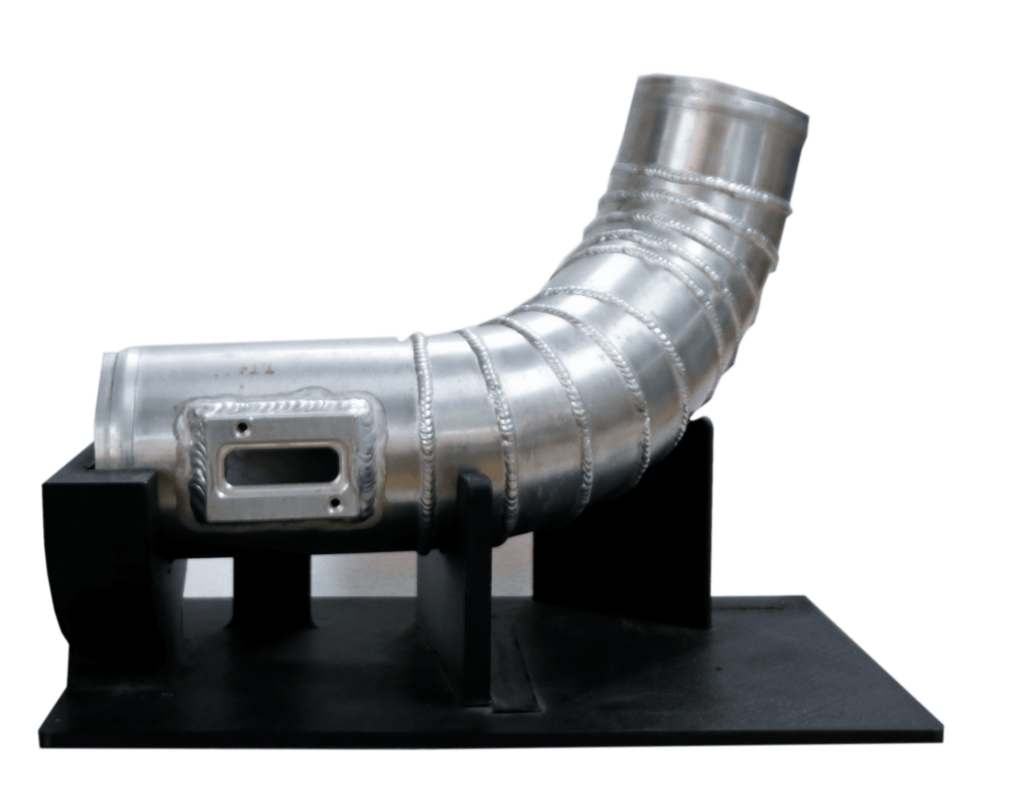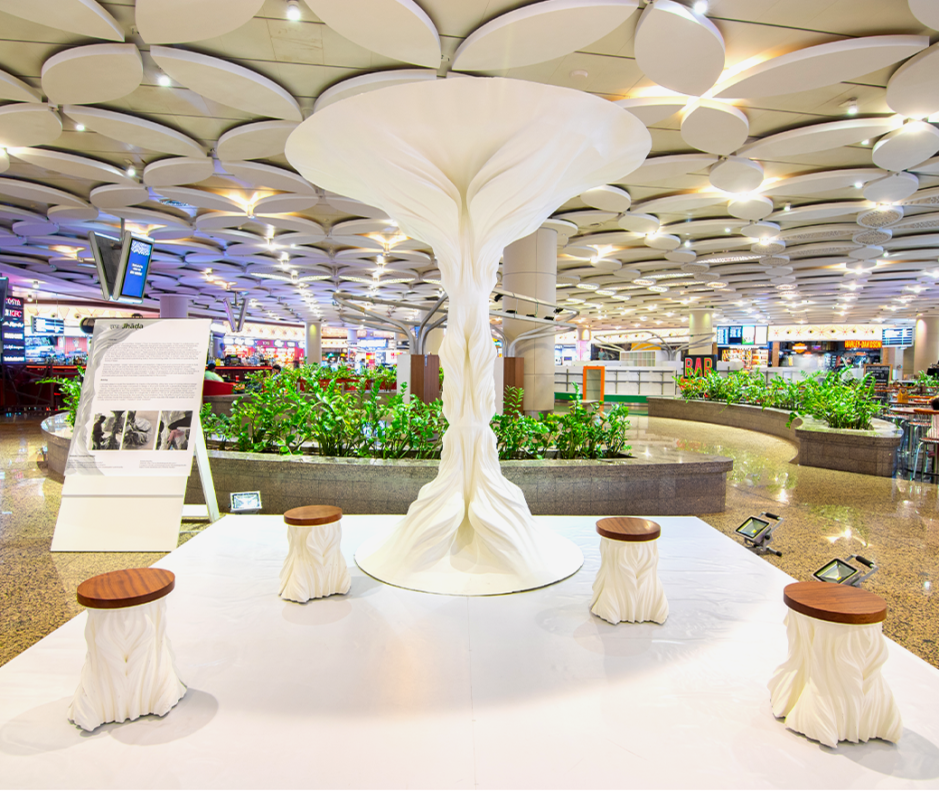

Speed: 600mm/s
Bulied Volume: 40x30x40 cm
Power: 1000W
Speed: 500mm/s
Bulied Volume: 50x40x40 cm
Power: 1200W
Speed: 400mm/s
Bulied Volume: 70x40x40 cm
Power: 1700W





Custom-developed for the Dragon Series. Fractory takes the best of Cura and elevates it with precision-tuned profiles and seamless printer integration.
Maintains internal temperature using heat from the bed and passive insulation — ideal for printing industrial-grade materials.
Ensures safety and print integrity by locking the door automatically during high-temperature operations.
Real-time filament runout and flow sensors help prevent failures and improve reliability during long prints.
From 0.4mm to 1.2mm – choose your print detail or speed with interchangeable nozzles designed for versatility.
Smart Monitoring. Seamless Control.
camera feed 1
camera feed 2
Stay in control wherever you are with real-time print monitoring and seamless job uploads.
Built for real-world production and trusted by professionals worldwide.
“The Dragon 500 streamlined our product testing cycle by 40%.”
– XYZ Automotive
Client Logo 1 Client Logo 2 Client Logo 3
3D printing isn’t a direct replacement for traditional manufacturing, but it offers unique advantages that make it a powerful alternative or complement, depending on the application.
At Fracktal Works, we see 3D printing as a game-changer for:
Rapid prototyping – Designs can be turned into physical parts within hours, enabling faster product development.
Cost-effective low-volume production – No tooling or molds required, making it ideal for custom or small-batch parts.
Design freedom – Complex geometries and lightweight structures are easily achievable, which are often impossible with traditional methods.
On-demand manufacturing– Parts can be produced as needed, reducing inventory and waste.
Traditional manufacturing still has the edge in:
Mass production– It’s more cost-effective for large volumes.
Material variety and tolerances – Some metals, finishes, and precision levels are better suited for CNC or injection molding.
In summary, 3D printing isn’t superior in every situation, but it excels in speed, flexibility, and customisation—making it an essential tool in modern manufacturing.
At Fracktal Works, we specialise in two primary 3D printing technologies: Fused Deposition Modeling (FDM) and Selective Laser Sintering (SLS). Here's an overview of these technologies and how they cater to various applications:
---
Fused Deposition Modeling (FDM)
FDM is an additive manufacturing process where thermoplastic material is extruded layer by layer to build a part. It's widely used for rapid prototyping and functional parts.
Key Features:
Cost-Effective: Ideal for low-volume production and prototyping.
Material Versatility:Supports a range of thermoplastics like PLA, ABS, and Nylon.
User-Friendly: Suitable for both beginners and professionals.
Fracktal's FDM Printers:
Snowflake:A compact, plug-and-play printer designed for versatility.
Julia Series: Offers precision and reliability for various applications.
Volterra: An industrial-grade printer with a 450°C nozzle and 150°C build chamber, suitable for high-performance materials.
---
Selective Laser Sintering (SLS)
SLS uses a laser to sinter powdered material, binding it together to create a solid structure. It's known for producing durable and complex parts without the need for support structures.
Key Features:
High Precision:Achieves fine details and smooth finishes.
Material Efficiency: Unused powder can often be recycled, reducing waste.
Complex Geometries:Ideal for intricate designs and functional prototypes.
Fracktal's SLS Printers:
Apollo 250: Designed for producing high-quality, functional parts.
MDS-1: A material dryer system ensuring optimal powder conditions for consistent results.
Printstick Accessories to enhance the SLS printing process.
---
By offering both FDM and SLS technologies, Fracktal Works provides solutions tailored to a wide range of manufacturing needs, from rapid prototyping to producing end-use parts.
When it comes to 3D printing software, Fracktory be the software of choice. This advanced software is designed for high-performance end-use parts and prototypes in controlled manufacturing environments. Some of its notable features include the Accuracy Center, Manufacturing Templates, support for 3rd Party Plugins, and Per-Part Estimation. Keep in mind that more features will be added in future updates.
Using Fracktory can significantly reduce your print preparation time and minimize material wastage, leading to substantial cost and time savings for users."
3D printing, or additive manufacturing, involves the creation of a three-dimensional object based on a digital 3D model or CAD design. This manufacturing process encompasses a range of techniques where materials are either deposited, fused, or solidified in a controlled manner by a computer. Typically, these materials are added in a layer-by-layer fashion and can include plastics, liquids, or powders.
There exist multiple 3D printing technologies, each characterized by its distinct processes and material options. Some of the common methods in 3D printing include Fused Deposition Modeling (FDM), Stereolithography (SLA), PolyJet, among others. The choice of technology and material selection depends on factors such as the complexity of the desired object, material properties required, and the intended application.
Fracktal Works' 3D printers are engineered to excel in both prototyping and production runs, offering flexibility and efficiency for various manufacturing needs.
Rapid Prototyping: Fracktal's printers enable quick turnaround times, allowing for faster design iterations and product development.
Cost-Effective: Ideal for creating prototypes without the need for expensive tooling or molds.
Low to Medium Volume Production: Fracktal's printers are suitable for producing small batches of end-use parts, making them ideal for custom or limited-run products.
Consistency and Precision: The printers maintain high-quality output across multiple units, ensuring uniformity in production.
Fracktal's FDM printers, including the Snowflake, Julia Series, and Volterra, support a diverse selection of thermoplastics:
PLA (Polylactic Acid): Known for high tensile strength and excellent surface quality, making it ideal for visual prototypes.Fracktal
ABS (Acrylonitrile Butadiene Styrene): Offers temperature resistance up to 85°C and is suitable for functional parts.Fracktal
PET-G (Polyethylene Terephthalate Glycol): Combines chemical resistance with toughness, functional up to 70°C.Fracktal
PVA (Polyvinyl Alcohol): A water-soluble support material, perfect for printing complex geometries.
Nylon: A durable, all-rounder material known for high strength and durability.
Carbon Fiber Nylon: Provides an excellent strength-to-weight ratio, is impact-resistant, and flame-retardant.
PC (Polycarbonate): Offers impact and heat resistance, functional up to 110°C.Fracktal
TPU (Thermoplastic Polyurethane): A flexible material with 600% elongation, resistant to wear and tear.Fracktal
The Julia Series features a heated platform reaching up to 130°C, ensuring reliable printing with engineering-grade materials like ABS, PC, and Nylon. Fracktal
The Volterra printer is equipped with a 450°C nozzle and a 150°C build chamber, enabling the use of high-performance materials.
Fracktal's Apollo 250 SLS printer is designed for production-grade printing, capable of handling complex and functional parts with high precision.
Process: Melts and extrudes thermoplastic filament layer by layer.
Materials: PLA, ABS, PETG, Nylon, TPU, etc.
Applications: Prototypes, functional parts, education.
Pros: Affordable, user-friendly, wide material choice.
Used by: Hobbyists, engineers, manufacturers.
Fracktal Works offers FDM printers like Julia and Volterra.
Process: Uses a laser to fuse powdered material (usually nylon).
Materials: Nylon, TPU, composite powders.
Applications: Functional parts, aerospace, automotive.
Pros: No need for support structures, durable parts.
Fracktal Works offers SLS technology with Apollo 250.
High-Temperature Capabilities: The Volterra printer features a 450°C nozzle and a 150°C build chamber, enabling the use of high-performance materials like PC and carbon fiber composites.
Precision and Reliability: Fracktal's printers deliver consistent, high-quality prints suitable for both prototyping and end-use parts.
Wide Material Compatibility: Supports a broad range of materials, including PLA, ABS, PET-G, Nylon, Carbon Fiber Nylon, PC, and TPU, catering to diverse application needs.
Advanced Material Handling: The MDS-1 material dryer ensures optimal filament conditions, reducing moisture-related print issues.Fracktal
Ease of Use: Printers like the Snowflake are designed for plug-and-play operation, making them accessible to users of all experience levels.
Innovative Accessories: Tools like the PrintStick enhance bed adhesion consistency, improving print reliability.Fracktal
Clientele: Fracktal's solutions are utilized by prominent organizations such as TVS, TATA, and IISc, reflecting their reliability and performance in professional settings.Fracktal
End-to-End Solutions: Beyond hardware, Fracktal provides design engineering and 3D printing services, supporting clients from concept to final product.